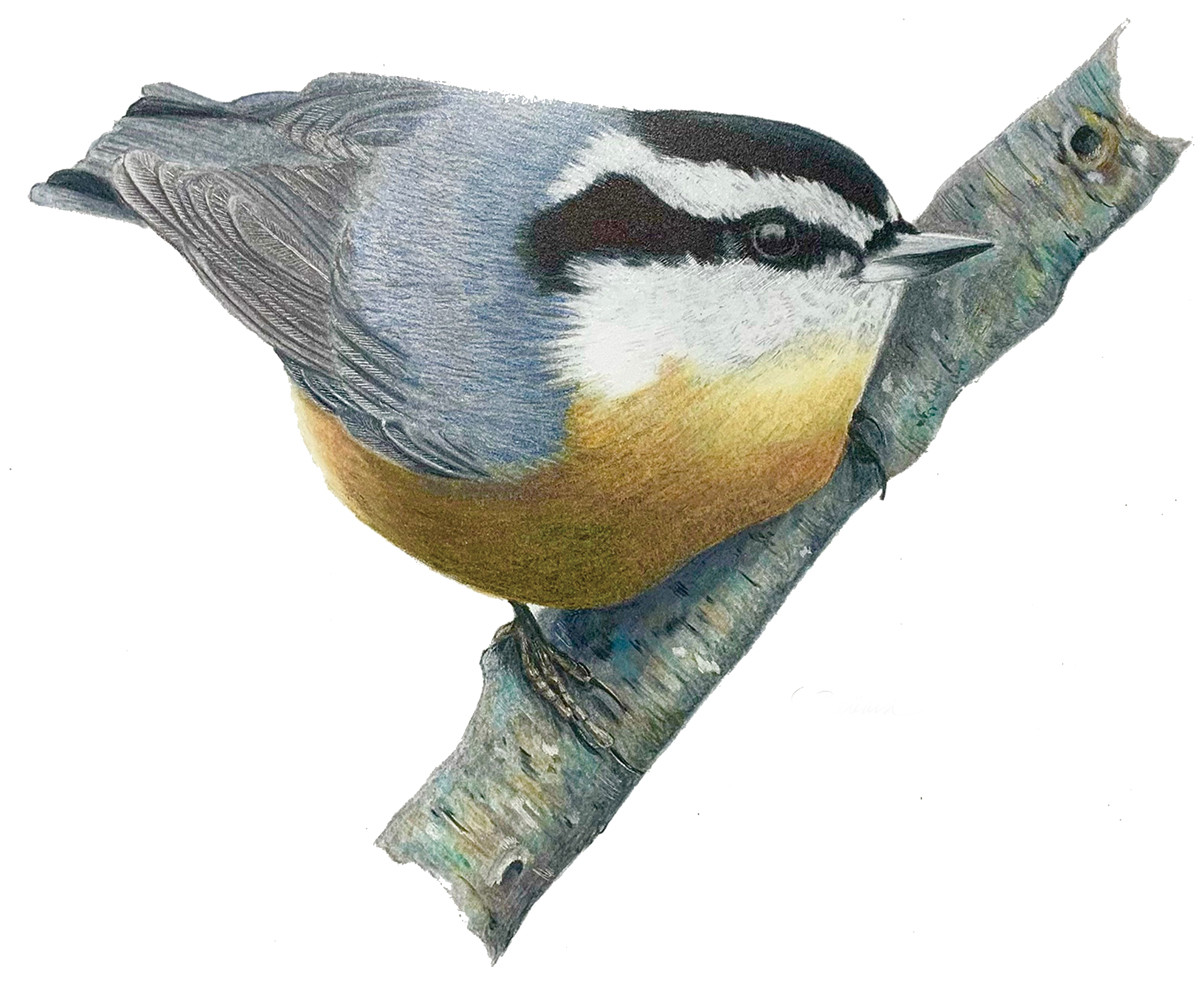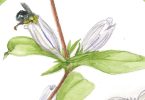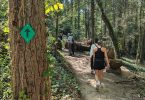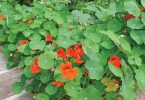By Casey First
The Red-breasted Nuthatch (Sitta canadensis) is a tiny and active little bird that can be seen in upper elevations around Western North Carolina.
A member of the Sittidae family, this sweet, plump, little bird is noticeably smaller than its familiar cousin, the White-breasted Nuthatch. Both males and females have a bluish-gray back with a cap to match, a white throat and a beautiful, bold black stripe that runs from their bill across their eye. They also have a distinct cinnamon-orange underbelly, which is more prevalent in the male. They have a stout and pointy tail and bill.
For being such a small bird, they sure do give off quite loud and distinct calls. Listen for a nasally and high-pitched yank-yank. Their call is reminiscent of a much larger bird—the Ivory-billed Woodpecker, sadly now extinct. Although they are small, Red-breasted Nuthatches show little fear of humans. If you’re standing quietly in a conifer grove, you may find one dancing right behind your back.

David Ballard, artist
This nuthatch has very distinct movements, as it navigates up and down the sides of trees and within branches, zigzagging about with flocks of chickadees and other small songbirds. As they acrobatically maneuver amongst the coniferous forests, they scavenge for high-protein snacks such as beetles, caterpillars, ants and spiders. They also can be found clinging upside down.
Red-breasted Nuthatches will readily eat from a backyard bird feeder and are not picky eaters, but strongly prefer whole peanuts. They often take these peanuts to a nearby tree, jamming the pieces into the bark to hammer the peanut open. Unsurprisingly, these little birds can be aggressive and sometimes dominate larger birds at feeders.
On a map, these birds are year-round residents of a handful of western states, much of Canada, the northeast and a tiny strip of Appalachian mountainous region that extends south from Pennsylvania and ends in WNC. Like finches and other birds, Red-breasted Nuthatches can be irruptive, traveling south in very large numbers when food is scarce, as in the boreal forests of northeastern Canada.
Unlike other nuthatches in their family, the Red-breasted Nuthatch nests farther north and in much higher elevations. They are also among the few non-woodpecker species that excavate their own nest cavities from solid wood. Typical of most nesting pairs, females choose the nest site and do the brunt of the work. Nests are usually found in dead trees or on the tops of trees that have broken off. Occasionally, they will reuse an existing hole, but they will rarely come to a nest box in your backyard. Mama Bird builds a soft nest of collected (and sometimes stolen from other nests) grass, bark and pine needles lined with fur and feathers.
A typical clutch size is about six eggs and they only have one round of babies per year. One interesting behavior they exhibit is collecting and smearing sticky pine resin around the entrance to their nest to deter predators. This creative tactic, coupled with their larger-than-life nature, makes it no surprise that these bold little birds are thriving in numbers and are of little concern conservation-wise.
That’s good news for us, so we can continue to marvel at these tiny but feisty birds that add so much vibrance and character to the forests in which they dwell.
Casey First is owner of North Asheville Wild Birds Unlimited, located at 946 Merrimon Avenue, Suite 120. Monthly bird events are free and open to the public, with no registration required. To learn more, visit NorthAsheville.wbu.com. Artist David Ballard lives in Candler. Find his work on Instagram at d.ballard.art.






